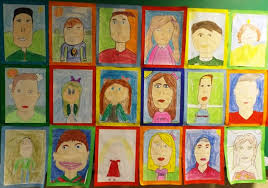Shock horror I have run out of tissues and there are none to buy. Just one of the things that we might run short of at the moment . So what are we to do? They are a token of how we have become reliant on certain products in our wonderfully materialistic lives. This huge loss in my 21st century existence led me to think about the loss of other things for example the splendid handkerchief.
Now rarely used it’s history goes back to Egypt in ancient times but became popular in Europe during the Middle Ages. In England it is recorded that Richard II( 1377-1399) used squared pieces of cloth to wipe his nose . I imagine they were not the neatly hemmed pieces of linen I remember my father using . These were beautifully white, boil washed and then perfectly ironed into a pile of neat squares to be placed in his bedside cabinet. Indeed they were part of my domestic education as the first attempts at ironing were to iron the handkerchiefs with progression to more complicated items once they were exactly square and flat with no creases.
My father’s usage generally complied with the usual definition of a handkerchief ” a form of kerchief typically a hemmed square of thin fabric which can be carried in a pocket or handbag and which is intended for personal hygiene such as wiping one’s hands ,face or blowing one’s nose”. My mother’s handkerchiefs gave an indication of other uses as although she did use them for personal hygiene and for wiping our faces and hands as children usually accompanied by a little motherly spit to dampen and us pulling faces were smaller and often very decorative. They had embroidered motives, lace edges or corners, printed pictures of cats or dogs, images of somewhere that she or someone else had visited on holiday or a day trip. I recall one with an Swiss Chalet though I don’t recall who went on such an exotic holiday. These were often presents arriving in decorative flat boxes at Christmas or in a small packet as a holiday souvenir.
Fashion has dictated many of their uses. Made in silk , or some other expensive cloth and in a variety of colours and prints they were frequently used for decorative purposes. These had no practical purpose except perhaps as a symbol of the class and status of the wearer. In the 1930’s and 1940’s they were made very popular by film stars like James Cagney and Fred Astaire who had styles of folding and wearing named after them along with intriguingly named designs such as the Winged Puff. In the 16th century ladies of status would use them as fashion accessories though they may have also used them to occasionally discretely cover their noses! In the 18th century they were often dropped as a sign of flirtation or courtship or given as a keepsake, a charming custom. Of course fashion will dictate colours and prints, Disney prints for children, floral and lace for a lady, silk for the gentleman.
Practicality has encouraged many other uses. The large spotted handkerchief that carried a piece of bread and cheese in a children’s adventure story; my Gran wrapping leftover food at a cafe to take home; carrying and wrapping of various treasures; wrapping round the face for protection against dust or smells or dare I say viruses; a bandage over a small injury; clearing spills; wiping away tears; even hiding behind, or waving to get attention or in excitement. They have been used in dancing, think Morris here,although most of the white handkerchiefs waved at the worlds biggest Morris dance directed by the wonderful Richard Digance at Fairport Conventions  festival every year are now paper not neatly hemmed linen. Today commemorative hankies are popular for weddings, christenings etc. Crafts people have invented ways of using vintage hankies as tablecloths, bedspreads or dolls and angels for the Christmas tree. And of course not to forget the ageless image of the holiday maker with the knotted handkerchief sunhat. A knot reminder, tie a knot in your hankie and at best you may just remember that you have forgotten something!
festival every year are now paper not neatly hemmed linen. Today commemorative hankies are popular for weddings, christenings etc. Crafts people have invented ways of using vintage hankies as tablecloths, bedspreads or dolls and angels for the Christmas tree. And of course not to forget the ageless image of the holiday maker with the knotted handkerchief sunhat. A knot reminder, tie a knot in your hankie and at best you may just remember that you have forgotten something!
So if this modest accessory has had such a place in our social history what happened to it? Well, Kleenex happened. Kleenex was developed in America in 1928 and in 1932 was marketed as ” The handkerchief you can throw away”. Its utility was going down, no more boil washing. It did however hang on in there as a fashion item for a while and even had something of a resurgence thanks to the pocket fashion of the stars and fashionable gentlemen. And now it seems that we cannot do without it, we are panic buying tissues and stockpiling in case of shortage!!! Perhaps we could go back to the beautifully hemmed pieces of linen, even making them which could be an activity while we are isolated and teach children how to sew. A personal note here, my paternal grandmother had a one time worked in the household of a someone rather grand as an assistant seamstress and even when very old I recall her hemming squares of material in the smallest, neatest, most even stitching I have ever seen. Still never matched except by machine.
Maybe one of the lessons we may learn at the end of this period in our lives is that there are some things we can manage without and perfectly acceptable alternatives that are reusable, decorative and multi-use. The humble perfectly formed and ironed handkerchief being just one of those.








